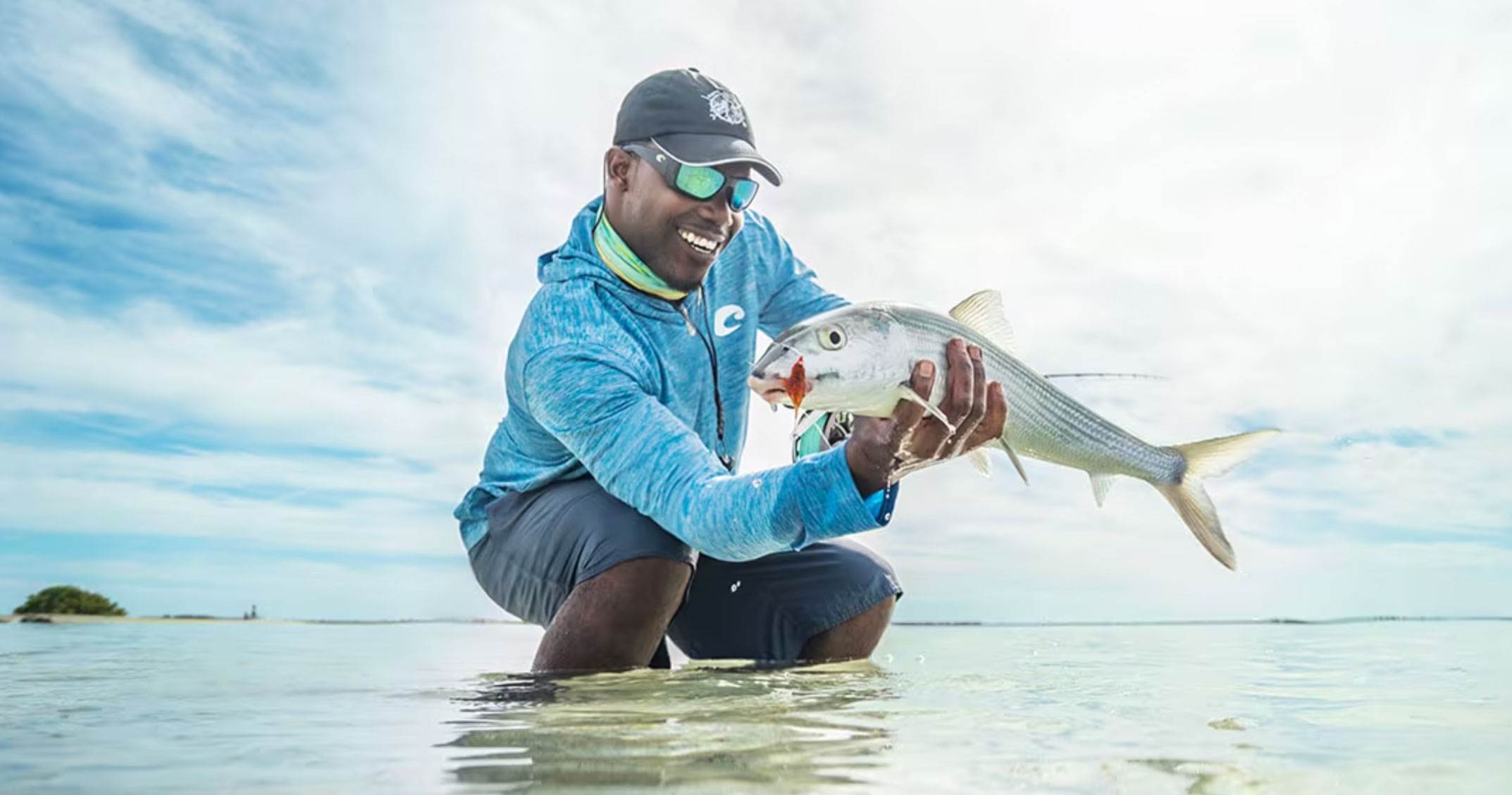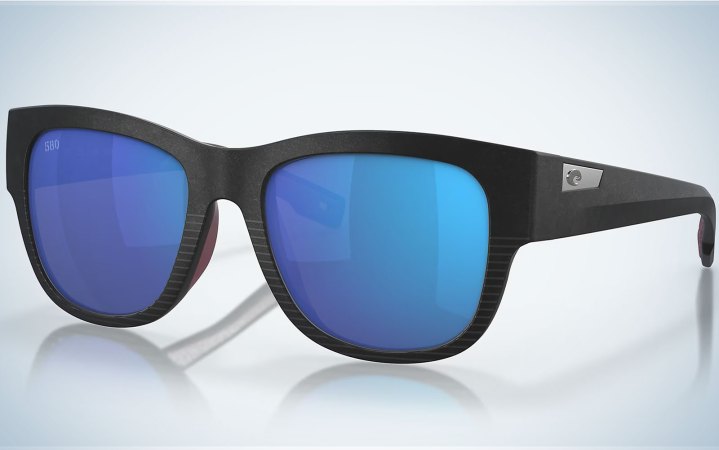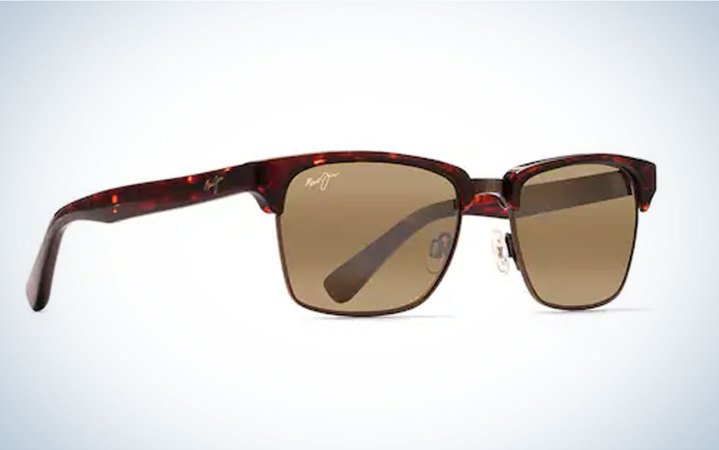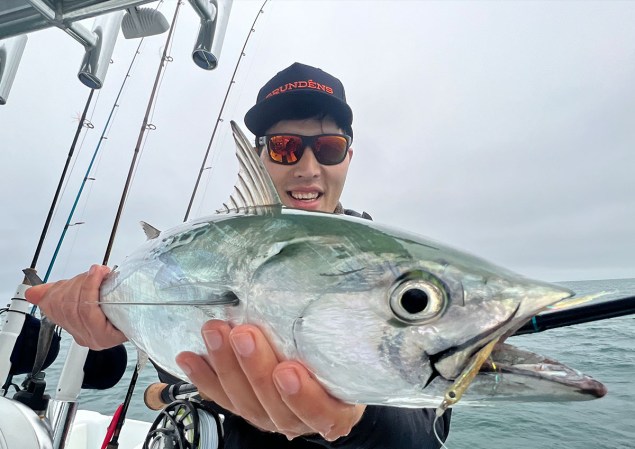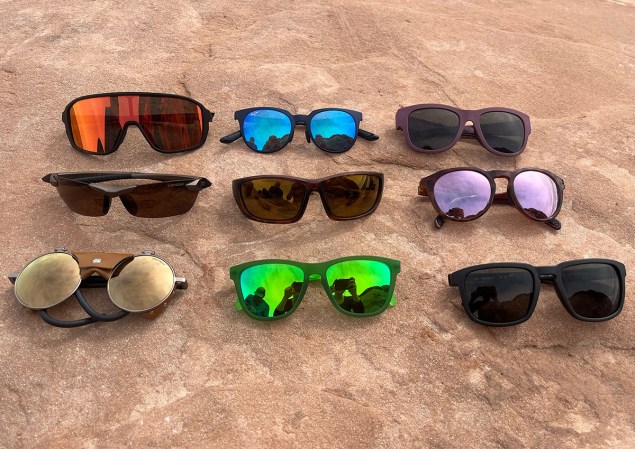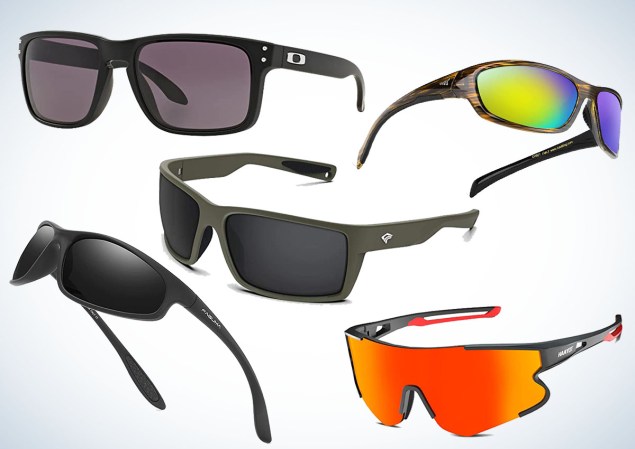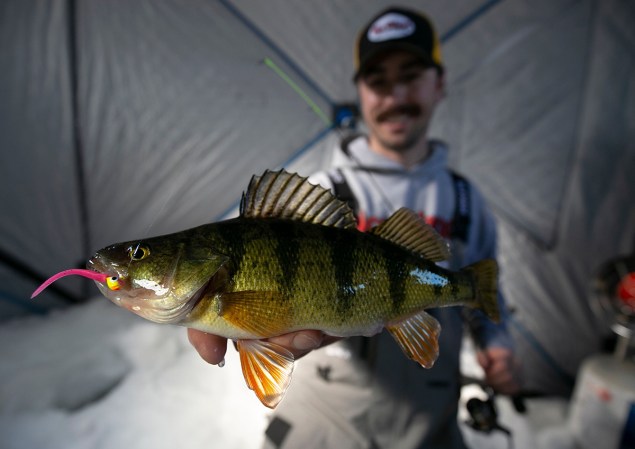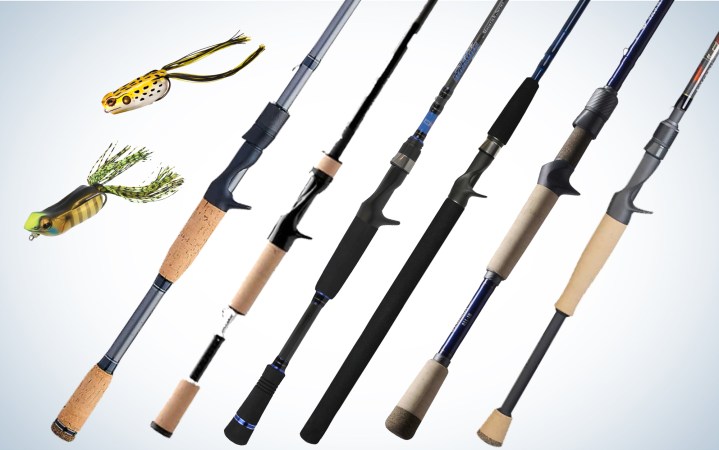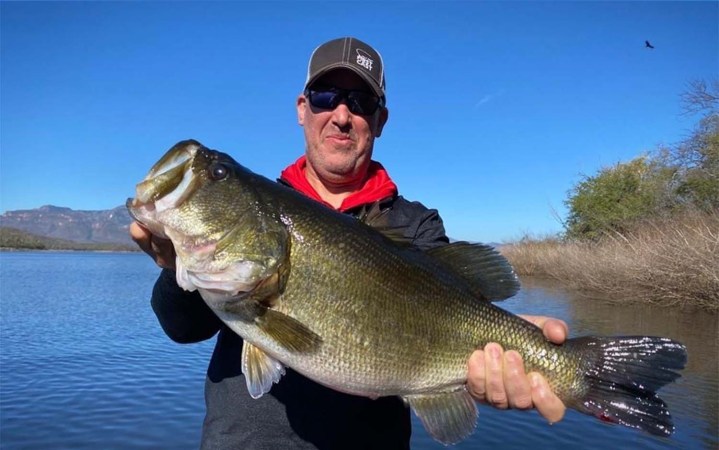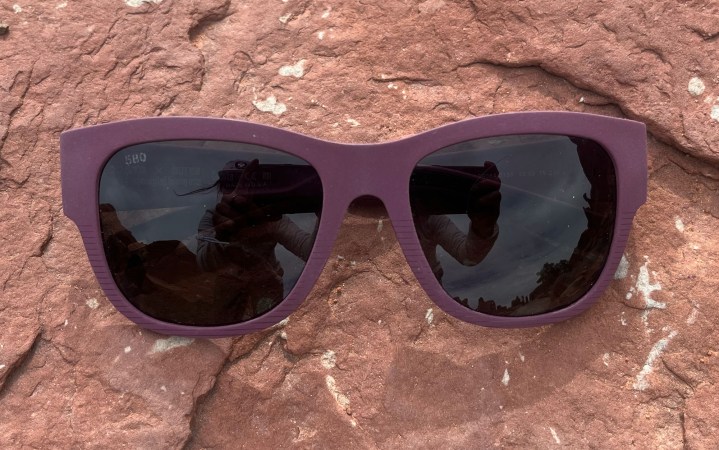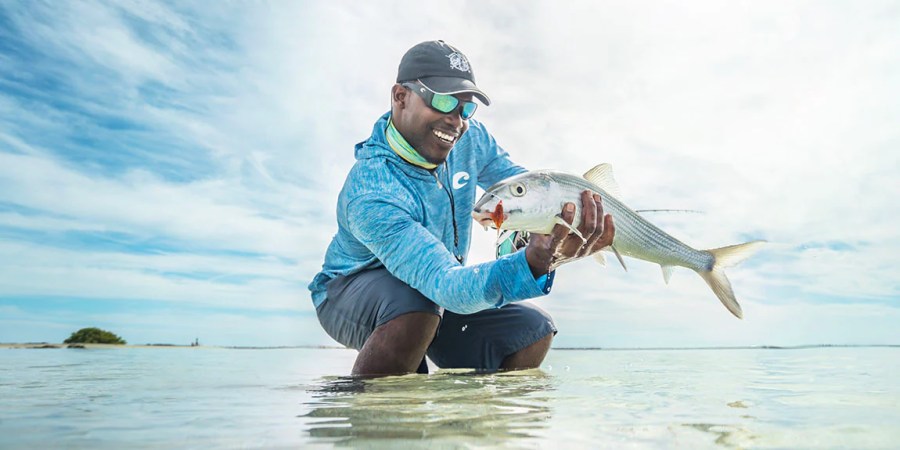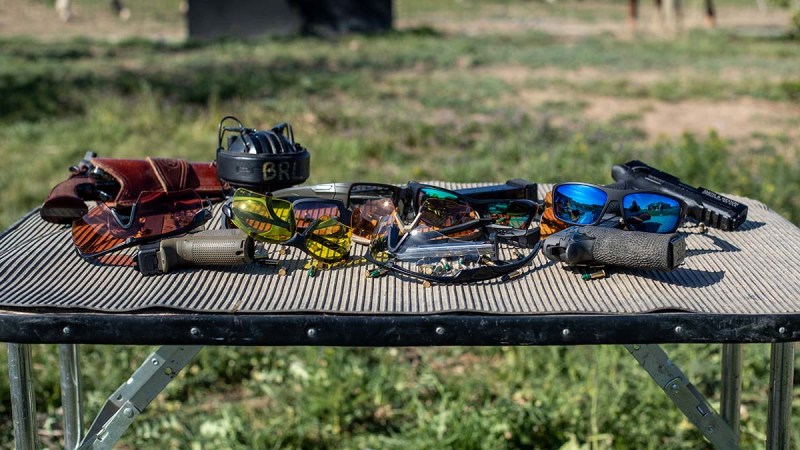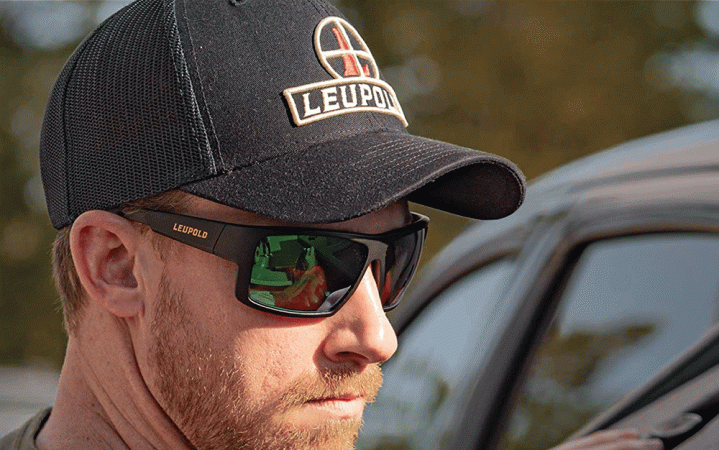We may earn revenue from the products available on this page and participate in affiliate programs. Learn More ›
Experienced outdoorsmen know that it takes all five senses to excel on the water and in the field, but vision is often most important. The ability to see subtle clues, penetrate the water’s surface, and prevent eye fatigue is critical. That’s why polarized sunglasses are an essential part of any tackle kit. They provide a window into the underwater world while also protecting your eyes. But what are polarized sunglasses really? And, are they worth it? Here we explain the difference polarized and non-polarized lenses and why you should consider spending a little more for better technology.
What Are Polarized Sunglasses?
It’s always important to protect your eyes against glare from harmful UV rays. But when those same rays are reflected off of a shiny surface like water, they become substantially more difficult to block. That’s where polarized glasses come in. They were invented by the same man who invented a camera for Polaroid, and contain an additional chemical coating. That coating works much like window blinds to filter out extra light.
They’re essential for fishing (as well as other sports on reflective surfaces, including skiing) because unlike regular sunglasses, they reduce glare and help an angler see what’s beneath the surface. With polarized sunglasses, bass anglers can spot largemouths or smallmouths on the bed. Stream trout and salmon fishermen can decipher underwater obstacles and see where fish are holding. Offshore anglers trolling for billfish can avoid eye fatigue and mirages that come with staring into a spread all day.
There’s also safety to consider. Polarized sunglasses help anglers avoid eye fatigue, which can lead to headaches or even eye damage. They also to protect against airborne objects like insects and debris, a fishing companion’s errant dry fly, or a snagged tungsten weight rocking back toward you at warp speed.
Read Next: Best Hiking Sunglasses
How to Choose Polarized Glasses
Choosing the best polarized sunglasses is personal. Not everyone’s eyes work the same way, and not all of us confront the same fishing scenarios. First, ensure any glasses you buy will be fitted in proper frames that also provide maximum coverage without excessive weight. Even if the lenses block out light coming straight at them, any rays that creep in from the sides, top or bottom could distort an angler’s ability to see fine detail. Heavy sunglasses – or ones with uncomfortable earpieces – will result in headaches and eye fatigue, particularly in extreme heat or cold. Nose pads should also be non-slip. If the glasses are otherwise desirable, consider adding more padding, a sunglass retainer, or side shields that reduce light intrusion.
For every angler, the perfect fit and weight will be different. Some fishermen like rimless wraparound frames while others prefer heavy gauge nylon. There are new materials for frame construction, including titanium and stainless steel. Some frames are even made of recycled fishing nets.
Read Next: Best Polarized Sunglasses for Fishing
Check for Prescription Capabilities
Anglers who wear corrective lenses should check if their preferred sunglasses can be outfitted with a prescription polarized lens. Most of the top brands can and will do this, at a cost. Some high-quality polarized glasses can also be made as bifocals, progressives, or even outfitted with inset readers.
Choosing the Right Polarized Lens Color
Another critical element in choosing the right polarized sunglasses is lens color. Historically, gray and brown (also called amber) were the only choices. The former was considered the best in super-bright situations, while the latter was perceived to provide greater clarity and perception in moderate sunlight.
When properly formulated, both reduce glare substantially. As a result, most manufacturers still maintain some variation of these shades in their lineups. But companies have now branched out to give anglers even more options. For example, many anglers use yellow or “sunrise” lenses for low light scenarios, including early morning, late evening fishing, and extremely overcast days. Others like a silver tint. Many saltwater anglers, particularly those who go offshore, prefer a dark blue lens.
If you can only afford one pair, and you engage in a variety of types of fishing, go with amber or gray. It’s also worth asking local anglers for their input.
Read Next: Best Places to Buy Sunglasses
Keep Them Clean and Safe
Finally, once you buy a pair or several pairs of glasses that fit your fishing style, protect them and keep them clean. A padded or hard case prevents someone from crushing your glasses, and a microfiber cloth and dedicated lens cleaning solution can help prevent scratches.
FAQs
While polarized sunglasses are generally beneficial for all anglers in just most situations, there are some disadvantages. First, the addition of the polarized coating comes with an increased price tag, variable by manufacturer. The second is that the properties that make them so effective for reducing on-the-water glare may also make it difficult to read screens like marine sonar and GPS units. Some companies, such as Maui Jim, are creating lens materials the prevent eye strain and eye fatigue when staring at electronics.
In general, you get what you pay for with polarized sunglasses, but cost and quality are not always perfectly correlated. Numerous brands specifically target and address anglers’ needs, including Costa Del Mar, Bajio, Maui Jim, Wiley X and Revo, but they’re not the only ones. When in doubt, talk to an optician or the expert at a local tackle shop. Try them on, wear them outside, and see if the curvature of the lens in any way results in a diminution of clarity. If so, they’re not for you. The ideal pair feels like you’re wearing nothing at all, providing one less distraction or hindrance on a boat or in the water.
Glass lenses are typically considered the best. They resist scratches, but they also come with some drawbacks. First, they are heavy, which can cause fatigue, and perhaps more importantly they can shatter upon impact.
Many anglers prefer some form of plastic, such as the proprietary CR-39, which is lighter than glass and less likely to shatter, even if it’s not quite as optically precise. There are also polycarbonate lenses, which are less popular but also typically thinner and lighter than glass or plastic. These advantages often cost more, so the benefits may not be worth it.
Final Thoughts
It’s easy to go out and buy a single pair of discount or non-fitted polarized sunglasses and fish effectively and reasonably safely. However, the incremental differences resulting from the proper lens colors, frame styles, and quality add up to increased comfort and additional fish. I’ve been on streams where I could see more than the anglers around me, not because my vision is any better (it’s not) but because I had the optical tool matched to the job.
Read Next: Best Shooting Glasses
As my fishing efforts have branched out from bass to include cold water species, and inshore and offshore saltwater efforts, so, too, has my collection of sunglasses. I typically have at least two pairs with me on any trip. I keep at least three in my boat – one of which is for the fishing partner who ended up with a one-size-fits-all option that didn’t maximize effectiveness.

